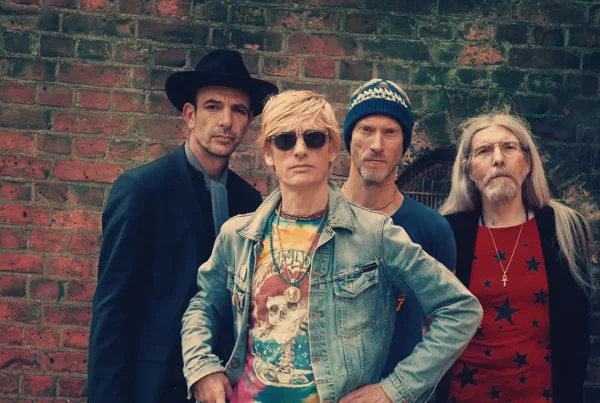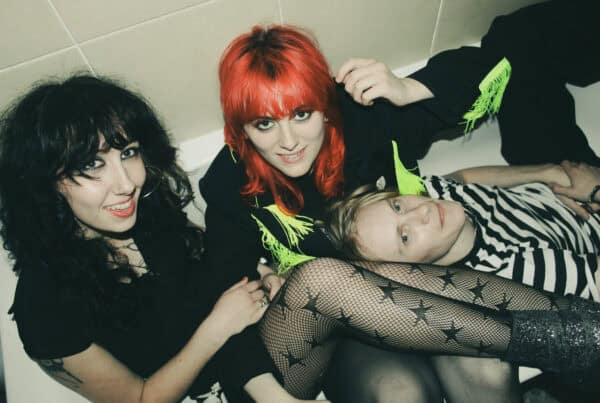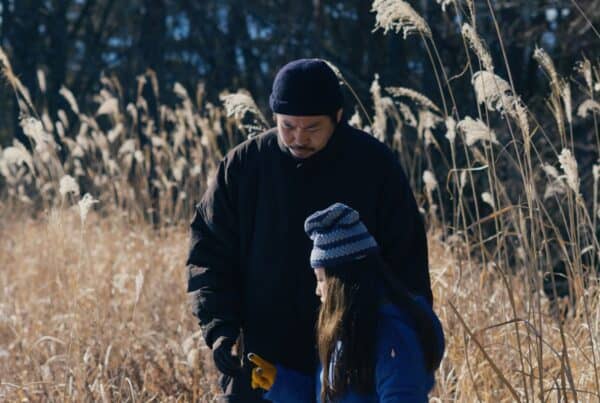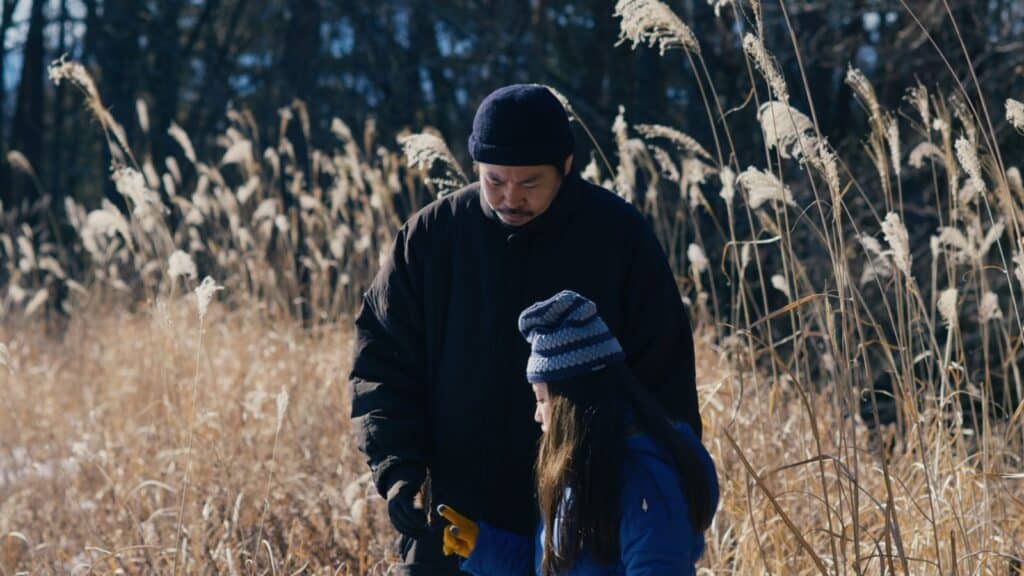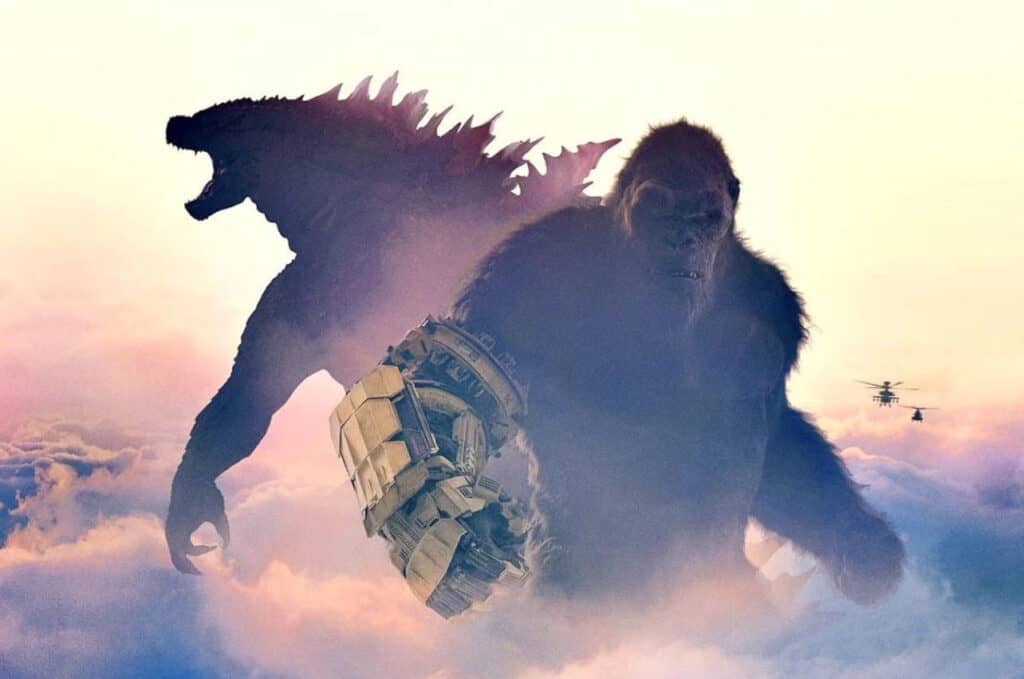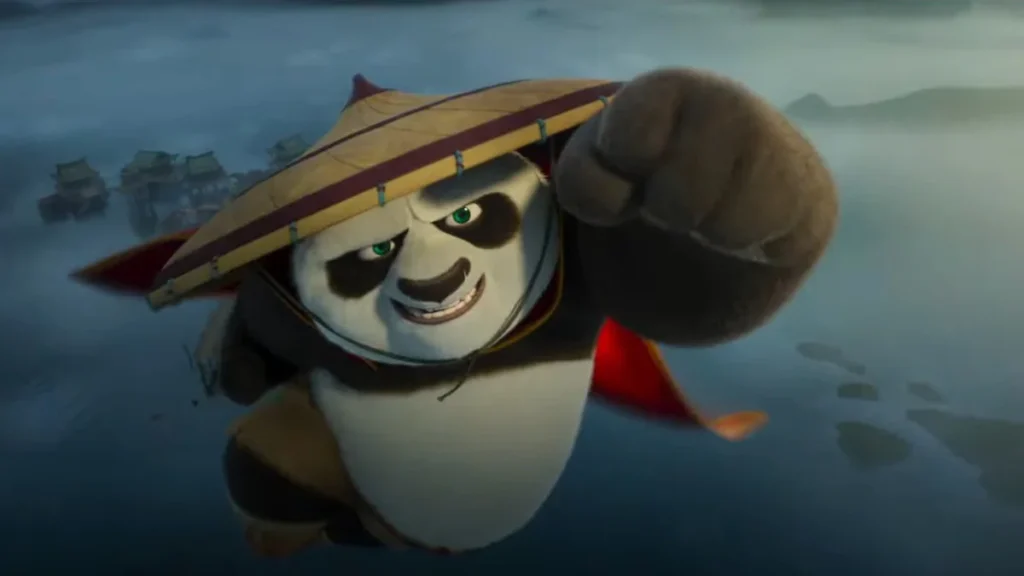We had the chance to talk with photographer and filmmaker, Steve Read about his latest project, Gary Numan: Android in La La Land. Steve talked with us about what it was like to tell the story of the legendary Gary Numan, the challenges he faced in the process and his career.

[like_to_read][/like_to_read]
S] What were some challenges you had putting this together and making a revealing and insightful piece of work?
SR] “There are a number of different challenges that arise when making a documentary. It’s predominantly an observational documentary, so it involves spending a huge amount of time with whoever you’re filming, a huge amount of time with Gary and his family. That’s a challenge, particularly as we cover in the film. He moved out to the states and we were based in the UK. That’s a challenge, getting out to the states. Being there at the right place at the right time and making sure we cover key things. Being there for key live shows. Being there for when the album was finished and came out in stores in LA. All important things to make the narrative working. Filming the stuff over here wasn’t so much of a challenge because we live here. I guess the main challenge is giving yourself up to the film. We spent a huge amount of time on it. We only just finished it and we started in the end of 2012. It’s a lot of our own time and a lot of our own money. It’s all self-financed. At the end of the day, we loved every minute of it. It all makes it worthwhile. Especially when people enjoy the film and say really good, favourable things about it, which is a massive reward for us.”
S] What was it like to be there to capture those personal moments. Were there any challenges for you as a filmmaker in getting the right emotion across?
SR] “The film is very intimate. It’s very revealing. A lot of it comes through trust and access. The more trust you get, the more access you get. We enjoyed a huge amount of access, as you can see in the film. We traveled out to America. We went on tour with him, we went in the studio with him, we ended up going on holiday with him. We got a lot of access and Gary really trusted me, I think. I was the one doing the intimate interview sessions and I got him to open up a lot. He was talking about stuff that he was just getting his head around at the time himself because he was writing about it. They are themes that are on the album, Splinter. He was just getting his around it at the same time as talking to me. It’s very raw and intimate, the stuff he was talking about, particularly depression and anxiety attacks. I’m really proud that we highlighted these issues. It’s great that someone of Gary’s stature is talking about this stuff and helping to highlight these problems that men have. They are often problems that men find it difficult to talk about – not so much women. It’s often seen as a joke, the idea of a midlife crisis, but it’s very much the opposite of that. It can destroy families and destroy men. A lot of men don’t get through it. Gary talking about his experiences and how he got through this is important and something I’m really proud of.”
S] There are also some great moments in there. It’s a great record in Gary’s history and you were there to capture moments of real happiness as well.
SR] “I’m a big fan. It was a lot of relief for us because we spent a lot of time doing the film. The album could have been shit. It’s unlikely, because it’s Gary Numan, but it could easily have been not as good as it was. For me, it’s my favourite Gary Numan album. It’s very personal, but it still sounds amazing. It sounds really out there, just like his early stuff. It has these really brilliant personal themes. Hearing it was great and realising how good it was and finding out the public and critics felt the same. It could have gone the other way. We made a film before this about three boxers on the way to the Olympic games. They could have failed and we would have nothing. After two years of following them, they could have not made the team and they would have been out and we would have been f*cked. We were lucky. We were very fortunate with Gary. We felt Gary was going to make this great album. He took a seven-year hiatus because of these issues and he really needed to make this a brilliant album. We wanted it to be brilliant as well.”
S] When you’re on your death bed, what are you going to look back on from this experience?
SR] “When I’m on my death bed, I’ll probably still be humming ‘Cars’ or something. That will be the last song I ever hear. We enjoyed a lot of it. It was really tough because we self-financed and had little logistical nightmares to be resolved. At the end of the day, I really enjoyed the experience. If I look back and think about my fondest memories, I would certainly say being on the tour bus with the band and filming Gary on stage, which was incredible with some of the bigger audiences as well, like the Manchester shows and the big top show we did at Bestival. You know why they do this stuff. It’s a huge buzz and I saw that buzz every time we did it. And just hanging out with the band and traveling on the tour bus, I learned a lot from the conversations we had. Those intimate moments that I shared with Gary in making this film were, for me, a real journey and a massive highlight of the film-making process. His kids were brilliant. They made us laugh all the time. Some of the burgers that we ate – I’ve never eaten so many burgers in my entire life. Gary loves a burger. He’s a bit of an expert. There’s a scene that we cut out of the film where he gives us his top five burgers.”
S] You’ve done many different pieces of work over your career. Is there anything you’ve learned from this process as a creative person?
SR] “I’ve done a fair bit of tour bus stuff. I’ve been a photographer since the mid-90’s, so I’ve done a lot of touring with bands like Eminem and Beck. I’ve don quite a bit of that. That certainly helps when you’re making a documentary because you don’t get intimidated and you’re not afraid to get in people’s faces because I’ve already done it for so long. The only difference is they’re moving images, as opposed to stills. I thought it would be more simple, the transition from photography to filmmaking. Being a photographer does help because you know how to put someone at ease and put a camera in their face. It can be a little bit of a hindrance and one thing you need to get over is the narrative and storytelling part of filmmaking is really important. That’s something I learned over the course of the last few years, through the last film and this one. How to get a story across to an audience that may not have heard of Gary Numan. I had a lot of help from Rob Alexander, my co-director, he’s really good at that stuff. We had a brilliant editor as well, Ollie Huddleston. If the question is what have I learned most, it’s how to successfully edit a film and get that narrative across, which is multi-layered. It’s more complex than a standard music documentary. The film is very much part music-doc, part love story, part road trip and part therapy session. We find out this stuff at the same time as the audience, which I think is a nice thing. It’s fairly orthodox and becomes more complex as it goes on and adds these other layers. I think it seduces the audience and keeps them engaged with the story.”
S] Can you tell us how you got your start in the industry and key tips and advice for young people?
SR] “You have to want to do it beyond anything else. I started out as a graphic designer and turned into an art director for magazines. I was the art director for Loaded Magazine, which was huge in the 90’s. It opened me up to being comfortable around personalities and celebrities. That led to being a photographer and I moved to LA to work for a big American publication called Talk. I started doing a lot of celebrities out there. That was my grounding. When you’ve done that, you feel like you can approach anyone. You’re not afraid to hang out with 50 Cent or whatever. I think that helps. I made that happen. It’s something I really wanted to do. If you really want to do something, you just have to get on and do it, otherwise you’re going to fail and technically, most people fail. If you’ve got belief in yourself and you know what you want to do, that’s key. After that, it’s just about hard work. This took nearly four years to make. It took a lot of hard work. So many times, we felt like this is never going to happen. There are so many obstacles in the way and you’ve got to be stupid to do this. You’re only ever three paces away from the lunatic asylum. Making magazines is really hard. I used to think that was the hardest thing you could do, but making films is really tough. You’ve got to make it fun and you’ve got to really want to do it because it’s going to take everything out of you. You have to enjoy it because it’ll be hard. You have to keep believing and you cannot give up. It’s tough, but when you get to the cinema and everyone’s laughing their heads off or they’re crying, you see that going on and everyone’s applauding at the end, you realise why you do it. You’re definitely not doing it for the money. Anyone can do it. If you’ve got the right ingredients, no one will stop you doing it. You don’t have to study film for four years at film school. I never did. The co-director, Rob Alexander, it was mainly his money. Had he not been in a position where he could fund it, we wouldn’t have made the film. We couldn’t get the funding. People are all over it now, but at the time, there were perceptions about Gary. It had to be self-funded. Without Rob being in a position where he could fund it, we wouldn’t have gotten there. Rob’s been instrumental as well. The two of us made the whole film. It’s a big achievement for two people to do. A lot of it is down to Rob not giving up on stuff when he could have.”
S] Some people have perceptions about Gary. Now you’re all getting what you deserve. Gary will get the acclaim and you’ve been experiencing this success. You’ve led a bit of a Gary Numan Renaissance.
SR] “There are people coming to the show who aren’t Gary Numan fans. It’s a good mix. It’s certainly got a crossover. You don’t need eyeliner and black nail varnish to enjoy Android in La La Land. It’s a film that’s got something for everyone. It’s heartfelt and intimate and it’s really funny in places. It’s a story that transcends the music-doc genre.”
S] What are you working on now?
SR] “I’m working on another documentary. I can’t say what it is. I like to make films about icons. People that people maybe don’t understand or have had bad PR over the years. I like to get to know them and get inside their heads and reveal what I know about them to the audience and seduce them into being really open. My next subject is definitely on par with Gary, and it’s a more ambitious film. Another big character that I will spend probably a year on. I have to go out to the states and spend ten days filming. We make a five-minute teaser that, hopefully, we’ll get backing for the budget to make the whole film. It’s going to be great.”
S] What are some highlights to your career as a whole?
SR] “I’m fortunate to have quite a few highlights. Early on, it would have been the success of Loaded Magazine. It was a constant party really. It’s a wonder we got the magazine out. Everyone would have Loaded on the day it came out. It got to the point where we got to five million readership. We’d go out to a party every other night and it would be a real buzz. I really enjoyed that. I moved out to LA, that was another highlight, moving to LA and living in Hollywood for four years. I was working for Q Magazine as well. I did stuff for Talk and then I would get to do stuff for Q Magazine. I would be the west coast photographer. That’s when I did a lot of touring with bands. It’s brilliant. I love it. As long as you get on well with them, you become one of the band. They accept you and you hang out with them after the gigs, staying up to all hours and having a party every night. I also went on a ride with Sonny Barger, who is the head of Hells Angels. I went on a ride with him to the four corners meet. These three biker gangs had been at war with each other for a decade and this was the big meet up to see if they could sort everything out. I was invited on that by Sonny. I turn up at this place and everyone has a beer in one hand and a shotgun in the other hand. I turn up in this Chevy Tahoe, roll the window down and the guy goes, “what the f*ck do you want?”. That was a brilliant experience. Meeting Eminem and being in the studio when he recorded Stan, that was good. The second album was huge. Stan in particular was massive and I was in the studio with him that day, shooting stills for Q magazine. I traveled the world for the boxing film. We did two boxers, one of which was a girl, Natasha Jonas, and we followed them all over the world. I was lucky to be there when she did what she had to do at the world championships in Beijing. She had to get to the semifinal in order to qualify for the London Olympics. We were inside, going nuts. When she won, I jumped in the ring. I climbed over the press wall with my camera. Robbie, the other co-producer on the film, he threw the flag in to her. That was brilliant. Making this film has been incredible. One of the biggest highlights is sitting at the side of the cinema and watching everyone love your film.”

